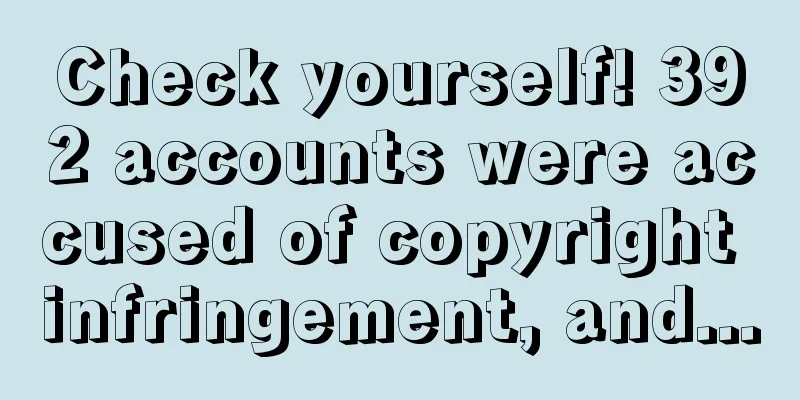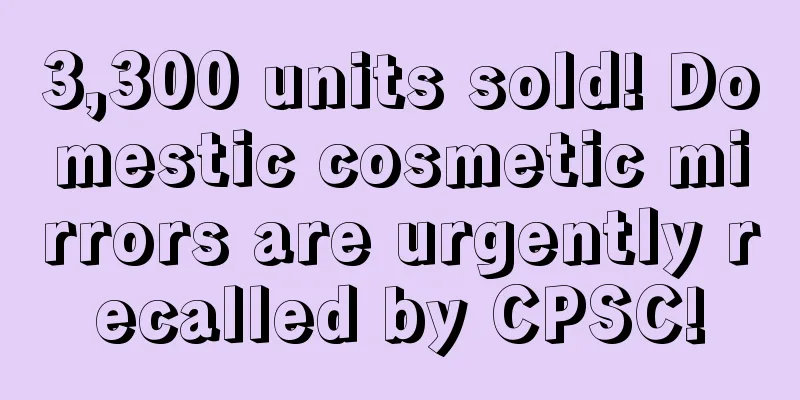Keyword Research Guide: How to Find High-Quality Product Keywords for Amazon Sellers

|
Many people know that Amazon is one of the largest e-commerce platforms, but they may not know that it is also a search engine like Bing and Google and is subject to the rules of search engine algorithms. Therefore, it is very important to perform keyword research on Amazon products to improve product listing visibility. But the question is how and where to find high-quality potential keywords? Before sellers understand how to use the right keywords to improve rankings and product listing visibility, there are some important things you need to know first.
Typically, “keywords” refer to the topics and ideas that describe or outline your content. But in terms of SEO optimization, they are the phrases and words that internet users type into the search box when searching for something. Keywords are also called "search queries" or "search terms." Whether you are a seller, content creator or website owner, you must use relevant keywords on your web pages so that you can appear on the search results page and get a higher ranking, and users are more likely to click on your page. But the premise is that your content is of high quality and has the information or products that users want.
Keywords play an important role between the content you provide and the content users search for. Whether you sell on Amazon, have your own e-commerce website, or write a blog, your goal is to rank on the search results page to increase organic traffic. The keywords you use will determine the amount of traffic or visitors you can get. Search engines use keywords to understand what users want to search for. Only with the help of keywords can search engines know what kind of websites or products to display. But this doesn’t mean you can just stuff keywords on your webpages. Creating attractive content can provide real value to users. Therefore, there are some specific rules to follow when it comes to how keywords are used.
Amazon backend search keywords is one area that most Amazon sellers cannot ignore. In fact, some sellers do not fully understand how it works and may not even know that backend search keywords exist. Many Amazon sellers believe that Amazon is just a giant e-commerce platform, so if they want to be successful, product listings should only revolve around:
While these two aspects play a key role in your product ranking on Amazon’s search results page, as mentioned before, Amazon is also a popular search engine. As with any search engine, using the right keywords will help your page get more traffic and potential buyers. Amazon backend search keywords are usually "hidden" keywords that can only be seen in the seller's backend and enable buyers who search for related keywords to see your products. Backend search keywords provide Amazon with additional keyword details beyond the product listing. You can think of backend search keywords as “HTML tags” for your website. Amazon users cannot see the backend search keywords used by sellers. However, if you use backend search keywords correctly, they can have a very large impact on the organic ranking of your product listing. Amazon’s backend search keywords have their own purpose. They work like HTML tags, often called “meta tags”. Meta tags are snippets of code widely used by websites to gain higher search visibility. Amazon backend search keywords and meta tags serve almost the same purpose. They help Amazon A9 algorithm to confirm whether the product listing is relevant for a specific keyword. Another important factor in product listing optimization is “aesthetics.” A few years ago, sellers overstacked keywords in product descriptions and product titles, and users simply couldn’t understand what they meant. This method was called “cloaking”, just to achieve SEO optimization effects. Although it does help rank keywords, it does not provide a great user experience. However, it is recommended that sellers do not try or use keyword stuffing to optimize SEO, as it may be "penalized" by search engines. With this in mind, Amazon provides a backend search keyword option where sellers can include other keyword variations in addition to their primary keyword. For example, if you sell plus-size clothing for women, you would use "plus size clothing" as your keyword, right? But perhaps someone is searching for plus-size women's clothing using keywords such as "big size clothing" and "clothing for obese women." So, how do you include these keywords? That’s right, use the backend search keyword. To add backend search keywords, you can easily do it by logging into the seller backend. Step 1 : Log in to your Amazon seller account; Step 2: Click on the Inventory tab; Step 3: Click the button on the right to edit; Step 4: Search keywords in the Keywords tab to edit the background. Amazon Platinum Keywords are only used by Amazon Platinum sellers to build their stores. Platinum Keywords allow sellers to customize their product listing structure in a way that customers want to see when they visit your store. Amazon clearly states that platinum keywords can only be filled in by platinum sellers. Therefore, general sellers do not need to consider this option. What if you are not a Platinum seller? You can use potential keywords in your product listing that users may use when searching. You can do proper research on the data when choosing keywords. If you find this difficult, then use a good keyword tool. Types of Sellers on Amazon Every Amazon seller falls into one of three categories:
1. Individual sellers They are usually small sellers who only sell a small number of products in a month. Individual sellers do not have to pay store rent, but they need to pay Amazon a certain fixed fee and commission for each sale. 2. Professional sellers Professional sellers pay a monthly fee and can create their own product pages and even sell restricted products. 3. Platinum Sellers Platinum sellers have a very strong sales history, very high feedback ratings, excellent customer support, and very high revenue. Only sellers who have reached special sales thresholds can become Gold and Platinum sellers. Sellers cannot purchase or upgrade their accounts to the Platinum level because it is invitation-only by Amazon, which means you can only become a Platinum seller if Amazon sends you an invitation to become a Platinum seller. Amazon's criteria for inviting sellers to become Platinum sellers are confidential. Therefore, there is no automatic threshold for sellers to become Platinum sellers.
Keyword analysis is an important step to take before creating a product listing on Amazon. If you don’t know what search terms your audience uses to discover your products, then how can you generate sales? Optimize keywords! Optimizing for keywords can have a significant impact on your organic rankings. A survey found that 75% of Internet users never scroll to the second page of search results. Therefore, sellers have good reasons to analyze and utilize keywords correctly. When your natural search results improve, the system will automatically discover your product details, thereby attracting more traffic. Keyword analysis not only affects search rankings, but also provides various benefits. In this regard, here are 5 advantages of effective keyword analysis: 1. Engage your audience The basis of creating appropriate content is to understand which keywords can bring more traffic to your listing page. You can do this quickly by using a keyword tool. Check what your target audience is really interested in and create engaging product descriptions and five bullet points around it. 2. Bring in traffic Attractive product images, compelling titles, and clear descriptions will not only attract potential buyers but also attract high-quality visitors. If your product pages offer real value to potential buyers, then you are likely to have a higher conversion rate. 3. Higher organic ranking After you’ve shortlisted your potential keywords, placing them in the right spots can have a big impact on your Amazon search rankings. Organic search engine rankings are extremely important for long-term success. Surveys show that 77% of online users will click on organic links instead of paid ads. Even if you rely solely on paid product ads, optimizing keywords can give your ads higher exposure. 4. Better understanding of trends By analyzing keywords, you can better understand consumer behavior and current marketing trends. Update your web pages to include hot trends and important information that your target audience cares about, and use them to keep your product content relevant. 5. Increase sales When your product listing ranks for the right keywords, you will get a lot of traffic. If you have potential buyers looking for your products, and if they are attractive, then your sales will soar.
One of the most important parts of Amazon SEO is keyword research. This phase requires researching all the keywords related to your product. These so-called “relevant” keywords will be the search terms that shoppers use when searching for your products on Amazon. For example, if one buyer searches by typing in the keyword “best swimwear,” another buyer could type in “best swimsuit.” While both have the same meaning and are potential keywords, they are different, so you need to include them in your product information or in your backend search keywords. Factors to Consider When Researching Keywords If you improve your keyword research strategy and techniques for your eCommerce business, you will reap huge benefits from organic search engine traffic. So, what should you look out for when researching keywords? Here are some things to keep in mind: 1. Keyword search volume Assessing keyword popularity is one of the best ways to start your keyword research. Obviously, the more people search for a specific keyword, the more traffic your listing will get if it appears in the search results. Of course, getting a higher ranking is not easy, but it is not impossible. The more popular keywords your listing contains, the higher the traffic will be. Sellers are advised to use tools such as SemRush or Google Keyword Planner, which provide detailed keyword information to sellers based on user searches on the Google search engine. However, if your goal is to rank on the Amazon search engine, these tools may not be of much help. Usually, the search volume of a keyword is what you need to pay attention to. You definitely don’t want to choose a keyword with no search volume, you want to choose a keyword with good search volume and not too much competition. 2. Keyword search volume trends The search volume for a keyword will fluctuate over time, so you can look at the monthly trends for a keyword to see how traffic has fluctuated over the last few search queries. While not all keywords have noteworthy trends, most do, especially if the keywords are seasonal, such as best Christmas gifts for women or best New Year gifts. Additionally, if you use a keyword like “home improvement,” you’ll see that it might trend up during the summer and spring and down during the winter. 3. Keyword competition Of course, choosing high-search volume keywords is a good start. However, whether such high-search volume keywords can rank on Amazon search results pages requires you to estimate. So how to estimate? That is to use keyword tools to obtain search trends on Amazon. Checking the competition for a keyword can give you an idea of whether or not you have a chance to rank for your product listing.
When it comes to keyword research, there are basically two types of keywords you need to check for:
The primary keyword is the keyword you’ll use in your product title, while the secondary keywords will be included in the product description, bullet points, and features. So, what techniques can sellers use to find the best keywords for your product listings? Here are a few ways to accomplish this: 1. Personal experience It may sound cliché, but putting yourself in your customer’s shoes is one of the best ways to do this. Take a moment to think about potential shoppers and ask yourself these questions:
In addition to the quick questions you can think of, you can also check social media, Facebook groups or Reddit to see how buyers are talking about your product. Perhaps they often search using the brand name instead of the generic name of the product, such as searching for "Kleenex" instead of "facial tissues," or look for acronyms or other abbreviations that are commonly used in the community. 2. Try using Amazon’s keyword autocomplete feature If you don’t have a lot of budget to invest in keyword tools, you can try using Amazon’s search keyword stuffing feature to do keyword research. Go to Amazon’s search box and quickly type what a buyer might type when searching for your product. Amazon’s autocomplete feature will then provide you with potential keyword combinations. The autocomplete keywords are not randomly generated, but the most searched keywords on Amazon. So, it does make sense. The autocomplete feature actually provides you with a set of reliable and effective keywords. *Note: This method requires patience, and you will need to further refine the keywords later, which may be more time-consuming than using the keyword tool directly. 3. Analyze your competitors’ listings A great source of inspiration for keyword research (and one that’s often overlooked) is competitor product listing research. Check how they list their products and what keywords they include in their titles, product descriptions, and bullet points. This will give you an idea of the keywords you can use in your product listing. Just by taking a quick look at your product title, you can get different keyword ideas. 4. Use a keyword tool that shows Amazon search trends *Note: Some sellers often look at the competition level of keywords and summarize how difficult it is to rank for a specific keyword. However, "competition" only refers to the level of competition for paid advertising, not the difficulty of ranking organically. Therefore, it is important to use a keyword tool that can show clear data about your keywords. Although there are many different keyword tools on the market, it is important that the data provided by these keyword tools is accurate based on the Amazon search engine. Sellers can try using some Amazon keyword trend tools. You can open .com to view the keyword tool section: After getting the researched keyword list, what should the seller do? That is to put the keywords in the right place, which is keyword optimization. The main keywords you researched are mainly used in the following places:
Your secondary keywords are mainly used in the following positions:
How about it? Amazon sellers, do you know how to do keyword research for your products? Text✎ Fang Xiaoling/ Statement: When reprinting this article, the title and original text must not be modified, and the source and original link must be retained. Group communication: We have set up an Amazon seller communication group. There are many big sellers in it. Add the customer service WeChat below and we will add you to the group. Currently 100,000+ people have followed and joined us |
<<: Seller’s Manual: How to Get Product Reviews Under Amazon’s Strict Review Policy
>>: The most complete guide: How to create and run Google PPC paid search ads
Recommend
Recruitment and training of cross-border e-commerce talents: How many ping-pong balls can be placed in the office? How should you answer?
"Wen Dao Seminar: Activity Overview" Aug...
What's going on? My brother-in-law supports the US tax increase, Amazon third-party sellers should be alert
Amazon, the largest e-commerce company in the Unit...
Amazon Advertising Underlying Logic + Optimization Strategy
What I want to share with you today is the underly...
Enhanced personalized experience! Best Buy app will launch new features
It is learned that on May 14, according to foreign...
What is Kakaku? Kakaku Review
Kakaku (Japan Price Network) was established in 19...
Temu US online shopping survey, consumers value these points most
It is learned that Temu commissioned Propeller Ins...
Amazon releases latest forecast! Primeday schedule is released one after another
In the past two days, Amazon officially released a...
FBA products cause big trouble! Amazon was found responsible
Let’s start today’s main text. ◆ ◆ ◆ ◆ We sellers...
What is Forrest Gump Overseas Warehouse? Forrest Gump Overseas Warehouse Review
Agam Overseas Warehouse is an intelligent overseas...
What is an offshore company? Offshore Company Review
An offshore company is a company registered and es...
Give up old ideas and start Amazon, you can also complete a small goal in a year!
New people come, old people go, Some people laugh,...
What is Yelp? Yelp Reviews
Yelp is the largest review website in the United S...
Bed Bath & Beyond enters wholesale market to expand branded products business
It is learned that on September 10, according to f...
What is FamPay? FamPay Review
FamPay India Payment Platform is a payment platfor...
Shopify teams up with streaming platform Roku to launch shoppable TV ads!
It is learned that according to foreign media repo...









